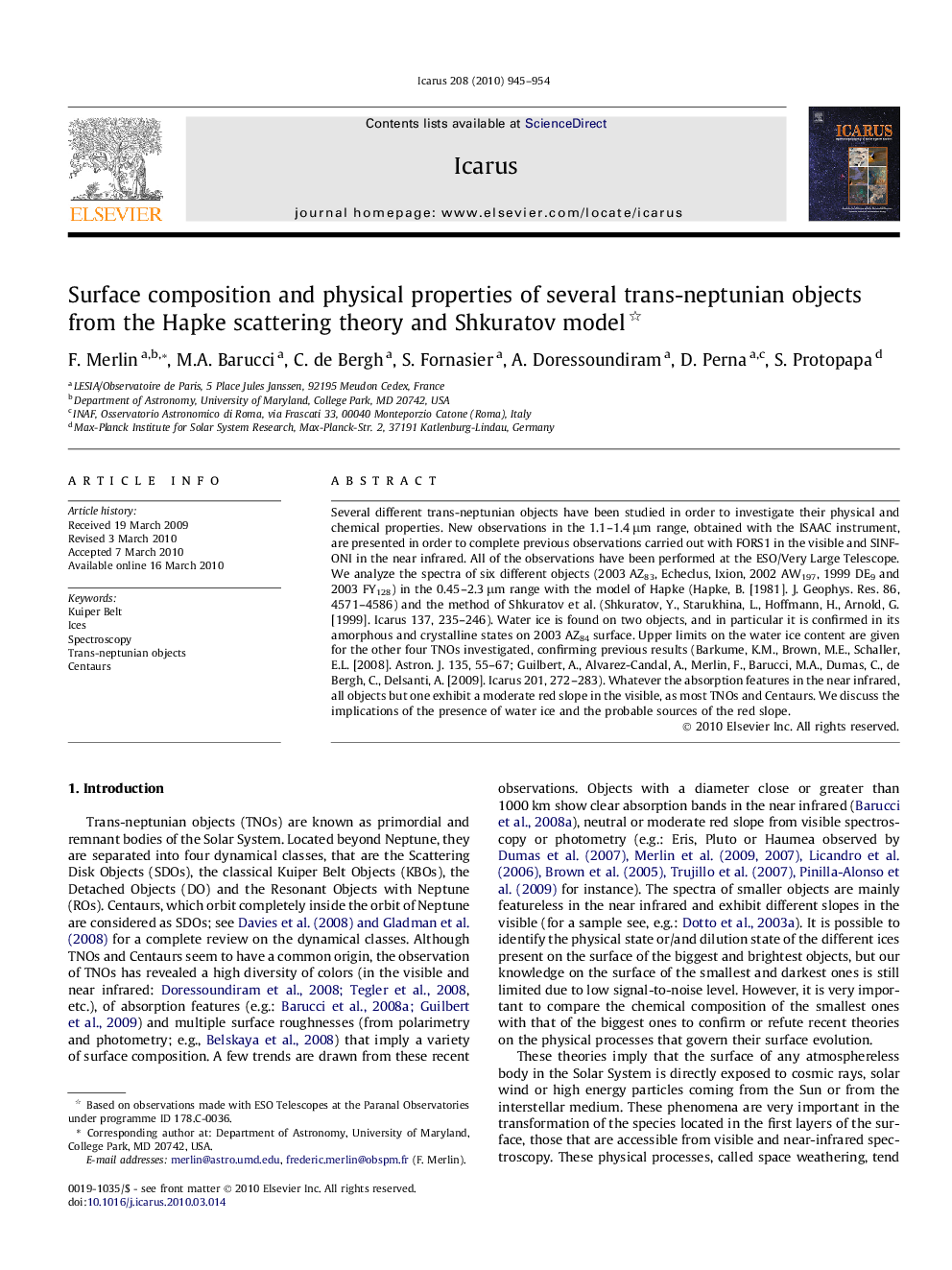| Article ID | Journal | Published Year | Pages | File Type |
|---|---|---|---|---|
| 1774094 | Icarus | 2010 | 10 Pages |
Several different trans-neptunian objects have been studied in order to investigate their physical and chemical properties. New observations in the 1.1–1.4 μm range, obtained with the ISAAC instrument, are presented in order to complete previous observations carried out with FORS1 in the visible and SINFONI in the near infrared. All of the observations have been performed at the ESO/Very Large Telescope. We analyze the spectra of six different objects (2003 AZ83, Echeclus, Ixion, 2002 AW197, 1999 DE9 and 2003 FY128) in the 0.45–2.3 μm range with the model of Hapke (Hapke, B. [1981]. J. Geophys. Res. 86, 4571–4586) and the method of Shkuratov et al. (Shkuratov, Y., Starukhina, L., Hoffmann, H., Arnold, G. [1999]. Icarus 137, 235–246). Water ice is found on two objects, and in particular it is confirmed in its amorphous and crystalline states on 2003 AZ84 surface. Upper limits on the water ice content are given for the other four TNOs investigated, confirming previous results (Barkume, K.M., Brown, M.E., Schaller, E.L. [2008]. Astron. J. 135, 55–67; Guilbert, A., Alvarez-Candal, A., Merlin, F., Barucci, M.A., Dumas, C., de Bergh, C., Delsanti, A. [2009]. Icarus 201, 272–283). Whatever the absorption features in the near infrared, all objects but one exhibit a moderate red slope in the visible, as most TNOs and Centaurs. We discuss the implications of the presence of water ice and the probable sources of the red slope.
